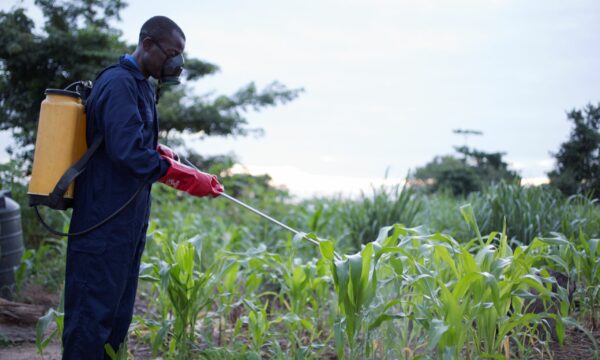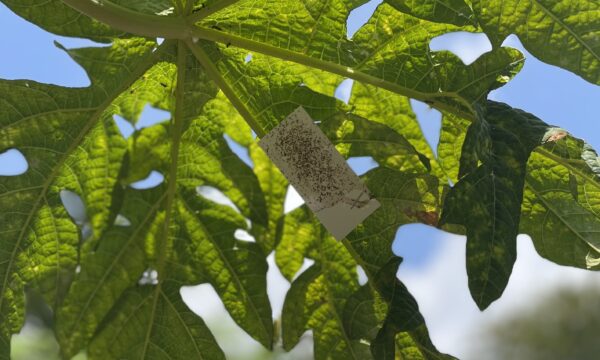
A mosquito in the genus Anopheles, which can transmit human malaria. Image by Yasser via Flickr (CC-BY-2.0)
Progress in malaria control in the past decade can be attributed largely to a massive increase in the number of insecticide based management programmes targeting malaria carrying mosquitoes, using methods that include indoor residual spraying and insecticide impregnated bed nets. The effectiveness of these management techniques is now being compromised by insecticide resistant mosquito populations. In 2012, the UN World Health Organisation (WHO) launched a strategic plan to help fight insecticide resistance in malaria vectors. A crucial part in the management of insecticide resistant mosquito populations is access to current information on insecticide resistant populations. IR Mapper is a new interactive online mapping tool used to track insecticide resistance in mosquitoes. The tool collaborates reports of insecticide resistance in malaria vector mosquitoes into maps which aim to assist vector control strategies. Data consolidation for the programme was conducted by Swiss company Vestergaard Frandsen, the Kenyan Medical Research Institute (KEMRI) and the US Centers for Disease Control and Prevention (CDC). To make this information available to users, an interactive map of all publicly available insecticide resistance data has been developed, with an interface developed by ESRI Eastern Africa
The system, which was launched in April this year, allows users to view new data on insecticide susceptibility and resistance mechanisms and to retrieve published data, including historic records dating to 1952. These data are then used to create maps from 51 countries. IR Mapper is a tool used to view results from WHO insecticide susceptibility tests using malaria vector mosquitoes collected from sites around the world. It can then be used to view results from investigations of insecticide resistance mechanisms (molecular and biochemical assays) in malaria mosquitoes collected from the same or different sites. IR Mapper can be used to generate tailored maps composed of different data layers and filters which enable the user to display different vector species, multiple years, insecticide classes and resistance mechanisms. The data on the site is extracted from scientific literature and from the existing IRBase database which stores data on the occurrence of insecticide resistance mosquito populations. The aim of the site is to assist research scientists, vector control product developers and policy makers in making decisions for mosquito control strategies and public health policies.
References:
‘New Malaria Tool to Help Track Insecticide Resistance’, June 2013, AllAfrica News
3 Comments
Leave a Reply
Related News & Blogs
How do pest risk registers address the spread of plant pests in Africa?
Pest risk registers can help to solve problems in agriculture, addressing the growing global threat of plant pests. Moreover, changing weather patterns, led by rising temperatures, are causing them to reproduce faster and expand into new regions. In ad…
10 July 2025





Reblogged this on Science on the Land and commented:
argylesock says… When I blog about human populations growing, it’s too easy for us in the rich world to assume that birth control can fix that. But it’s not so easy when you know that your kids will face a nightly onslaught of Anopheles spp. – the mosquitoes that carry malaria. There are many child-killers in this hungry world. Malaria is one of them.
Reblogged this on Jugraphia Slate.
These are some interesting ideas for controlling mosquitoes. Thanks for sharing them with us.
Regards
Rod
http://blueridgemosquito.com/